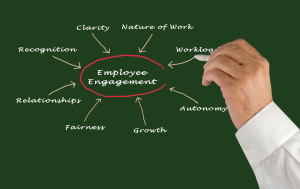 In our quest to find the key to building great companies we look for the easiest and fastest solutions. The “solution du jour” seems to be CEOs trying to make employees happy by providing all sorts of perks. The not so surprising result is that perks are not what makes employees happy.
In our quest to find the key to building great companies we look for the easiest and fastest solutions. The “solution du jour” seems to be CEOs trying to make employees happy by providing all sorts of perks. The not so surprising result is that perks are not what makes employees happy.
There is a great interview with Jim Clifton, CEO of Gallup, about all their recent findings regarding “employee happiness.” What the research shows is what I’ve been talking about for years – it’s about having the employees in the right seats. Strengthfinders says that you can’t fix a weakness and I completely agree. It’s about identifying a person’s strengths and finding a fit for those with a job that utilizes them. Clifton says, “The idea of trying to make people happy at work is terrible.” Perks and free lunches do not drive employee engagement. Engagement can only come from being in a place where someone’s contribution is important, recognized, and where they are doing something they can do very well.
Clifton also talks about culture, which ultimately drives performance in an organization. He says about CEOs and Executive managers, “They’re beginning to recognize that an authentically caring culture provides a clear and sustainable competitive advantage.” The key here is authenticity. Employees can spot a phony a mile away and innately know when someone is being inauthentic. A few weeks ago I wrote about the millennials and what they wanted. One of the 5 most important things for them was to be competitively and intellectually challenged, another was to make a difference. What this means is that they want to work for and with people who CARE. Caring about them, their career, the company and their co-workers makes a very, very productive culture.
So how do you start? It all starts at the top, with the leader using their heart. When a leader cares, they get results. So what’s not to like about this solution? It’s not everyone’s cup of tea, and for some leaders, caring is a sign of weakness. The reality is that not only is it not weakness, I would call it a sign of strength.
Take a look at your workforce. Is everyone performing at their peak? Probably not. Look at the positions you have people in and see if the roles fit their strengths. If not, see if you can modify the job so that it does, or move them into a role that will. If you don’t have anything for them, the best gift that you can give them is to sit them down, have a conversation about who they are, what they want, and what you think they are good at, and help them find a job somewhere else.
The rest of your team will be thankful you were so caring, and also that you are reinforcing the culture of performance by only having the right people in the right seats on the right bus – remember Jim Collin’s “Good to Great?” It makes for a great, caring culture that produces results.
